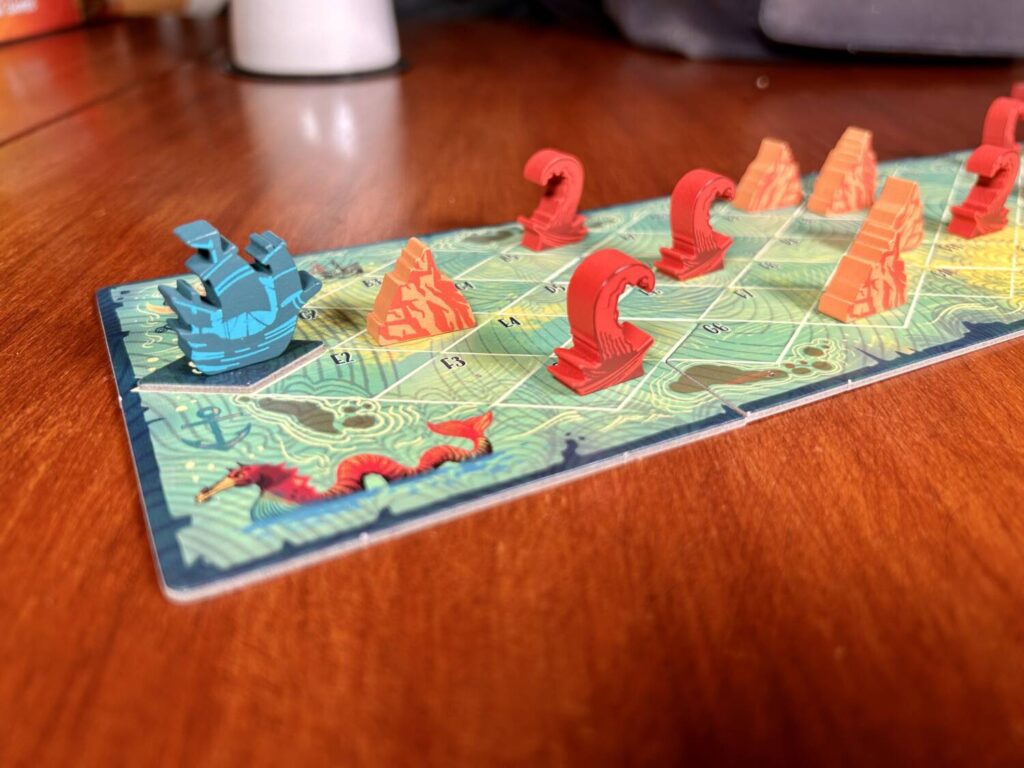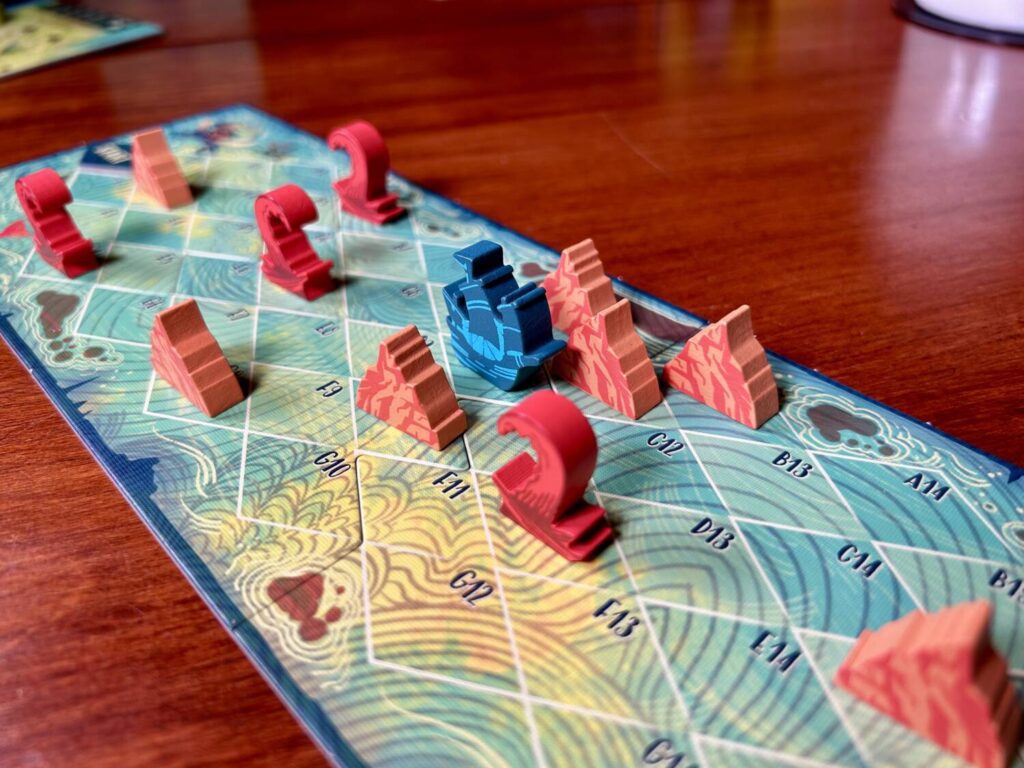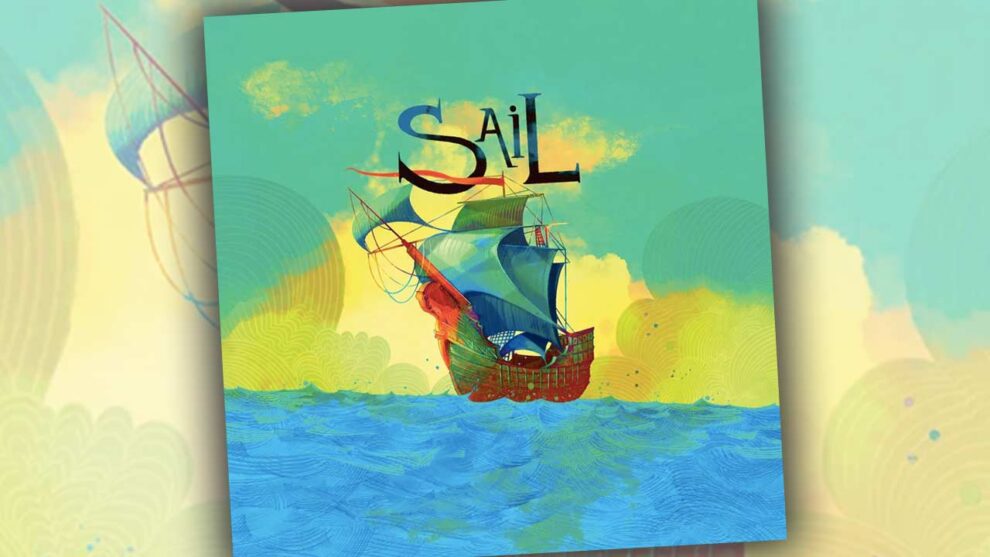Sail is a two-player cooperative trick-taking game, a family of design I haven’t seen since 2020’s fair-to-middling The Fox in the Forest Duet. The goal is simple, in theory: get your ship from one end of the board to the other by playing cards that combine well with your partner’s. All the while, you have to avoid taking damage from the monstrous kraken, who wants nothing more than to see your magnificent vessel rendered a wreck on the ocean floor.

The mechanism for steering your ship is must-follow trick-taking. At the beginning of each round, once cards are dealt out, each player passes a card to the other. Each card bears an action icon. Pair well the cards you and your partner play, and you’ll get a beneficial action. The possible action combinations are spelled out on the provided player guides, and while they’re quick to pick up, I won’t break them all down here. It’s good to pair helms, which move the boat one space forward diagonally, listing in the direction of the player who took the trick. It’s also critical to pair cannons with kraken tentacles, since that removes potentially damaging cards from the deck.
The kraken is your greatest threat. You can (and will) lose one of two ways: either you don’t make it to the end of the board before the end of the fifth round, or, more likely, the kraken deck runs out of cards. Any time the kraken attacks, which happens when a kraken icon is played without being paired with a cannon, or you move onto a space with a kraken tentacle, a card is moved from the kraken deck to the discard pile.
Every card in the kraken deck has a tentacle icon on it, meaning the more you’re damaged, the more likely you are to be damaged again. Plus, at the end of each round, the kraken delivers a chunk of damage, so you have to make sure there is a constant backlog of cards in that deck. This means Sail works in an element of deck management, and it does so to deeply and damply sweaty effect.

Three Sheets to the Wind
What a box cover, hey? Allplay have cemented themselves in the last year as the reigning belle of the board gaming ball, at least as far as presentation is concerned. Their games are beautiful and affordable, the ideal combination. Artist Weberson Santiago, responsible for a great number of striking covers over the last few years, delivered here in spades.
When you play a card, there’s seldom if any question of what your partner should play. What you don’t know, what you can’t know, is what they can play. If you’re leading, you’re throwing out a prayer. If you’re following, you’re trying to divine all the branching futures that constitute your hand.

In addition to the various difficult levels, there are also a number of captain cards, each of which gives its player a unique power. Mixing and matching these powers is one of the most interesting things to explore from game to game. You can learn to play well with each of them, but that requires flexibility. The constant is stress. Sail is not an easy game, and if you reach the point where it becomes one, you can change to one of the more difficult setups, the ones where you have to start trading off decisions about whether to move or take a hit. You’re constantly a little behind or too low on cards in the kraken deck. Sail is easy to teach and streamlined to play, but this game packs a good number of quandaries into its small frame.
It took me a few plays to really warm up to Sail. I don’t know if my expectations were too high, or if it’s the kind of game that needs just the right pair of players, but around the fourth game it started to feel exciting all the way through. There aren’t a whole lot of cooperative two-player trick-taking games out there. Even if there were, I suspect, Sail would still be one of the best.













Add Comment